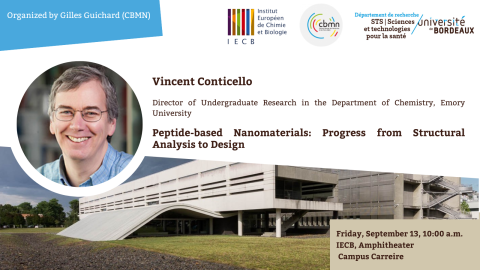Abstract
Historically, structurally defined materials on the nanometer length-scale have been the challenging to rationally construct and the difficult to structurally analyze.[1] Sequence-specific biomolecules, i.e., peptides and nucleic acids, have advantages as design elements for construction of these types of nano-scale materials in that correlations can be drawn between sequence and higher order structure, potentially affording ordered assemblies in which functional properties can be controlled through the progression of structural hierarchy encoded at the molecular level. However, the predictable design of self-assembled structures requires precise structural control of the interfaces between peptide subunits (protomers). In contrast to the robustness of protein tertiary structure, quaternary structure has been postulated to be labile with respect to mutagenesis of residues located at the protein-protein interface. Self-assembling peptide systems have been employed to interrogate the concept of quaternary structure designability within the structural context of synthetic filaments & nanotubes. These peptide systems provide an understanding of how minor sequence changes can translate into large changes in supramolecular structure.[2-4] The emergence of electron cryo-microscopy (cryo-EM) has enabled a revolution in the structural analysis of these peptide-based filaments at near-atomic resolution, which has provided significant evidence that the designability of protein interfaces is a critical consideration for control of supramolecular structure in self-assembling systems.[5]
Figure 1. A. Sequences of two structurally related coiled-coil peptides highlighting the differences. B and C. Cryo-EM images of Form I (B) and Form II (C) peptide assemblies. D and E. Three-dimensional reconstructions of the cross-alpha helical nanotubes resulting from self-assembly of Form I (D) and Form II (E) peptides.
References:
1. J. Miller, S. Hughes, C. Modlin, V. P. Conticello. Q. Rev. Biophys. (2022), 55, E2.
2. E. Egelman, C. Xu, F. DiMaio, E. Magnotti, C. Modlin, X. Yu, E. R. Wright, D. Baker, V. P. Conticello. Structure (2015), 23, 280.
3. F. Wang, O. Gnewou, C. Modlin, C. Xu, P. Juneja, G. Grigoryan, E. H. Egelman, V. P. Conticello. Nat. Commun. (2020), 12, 407.
4. F. Wang, O. Gnewou, S. Wang, T. Osinski, X. Zuo, E. H. Egelman, V. P. Conticello. Matter (2021) 4, 3217.
5. F. Wang, O. Gnewou, A. Solemanifar, V. P. Conticello, E. H. Egelman. Chem. Rev. (2022) 122, 14055.
Contacts:
Gilles Guichard : g.guichard@iecb.u-bordeaux.fr


